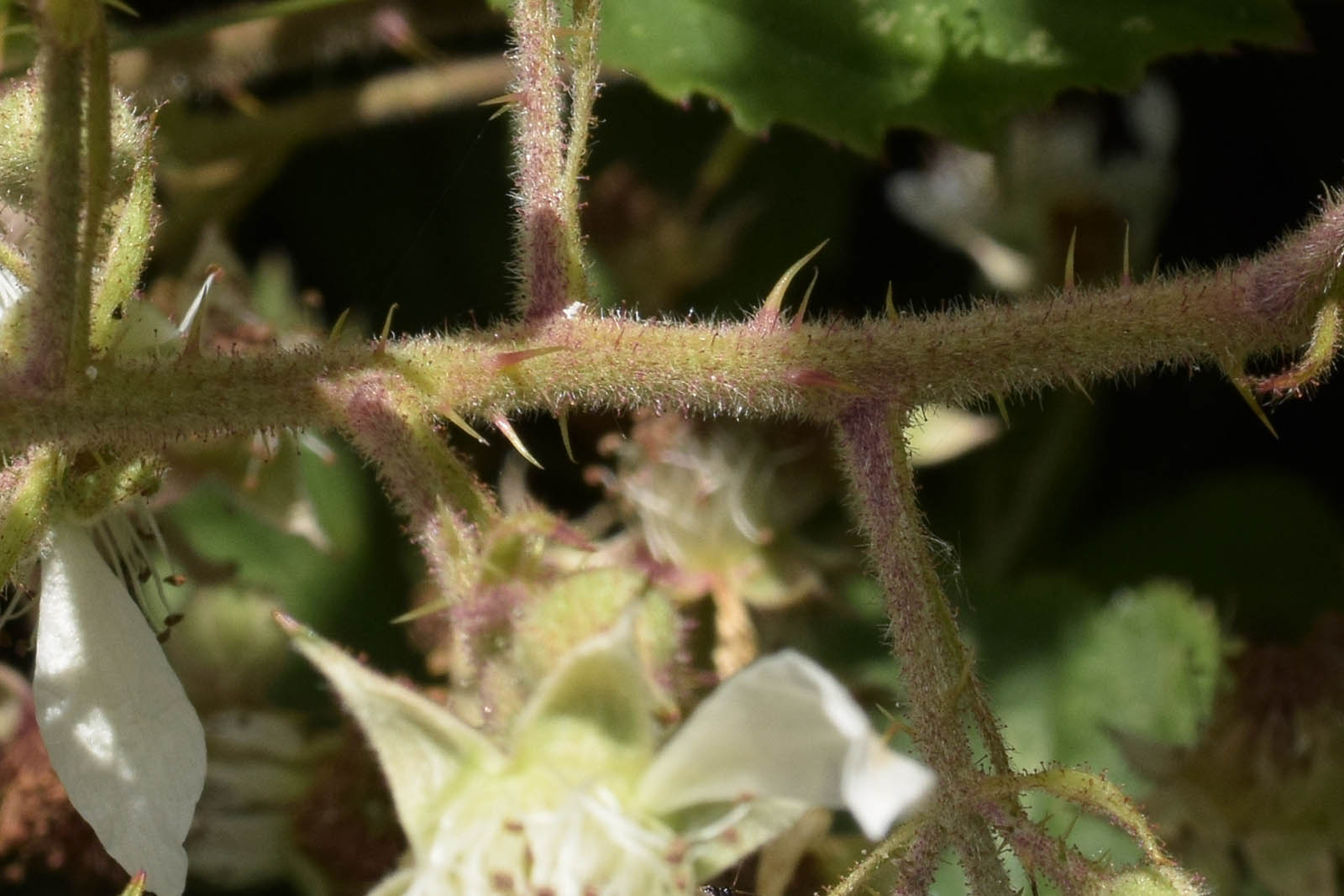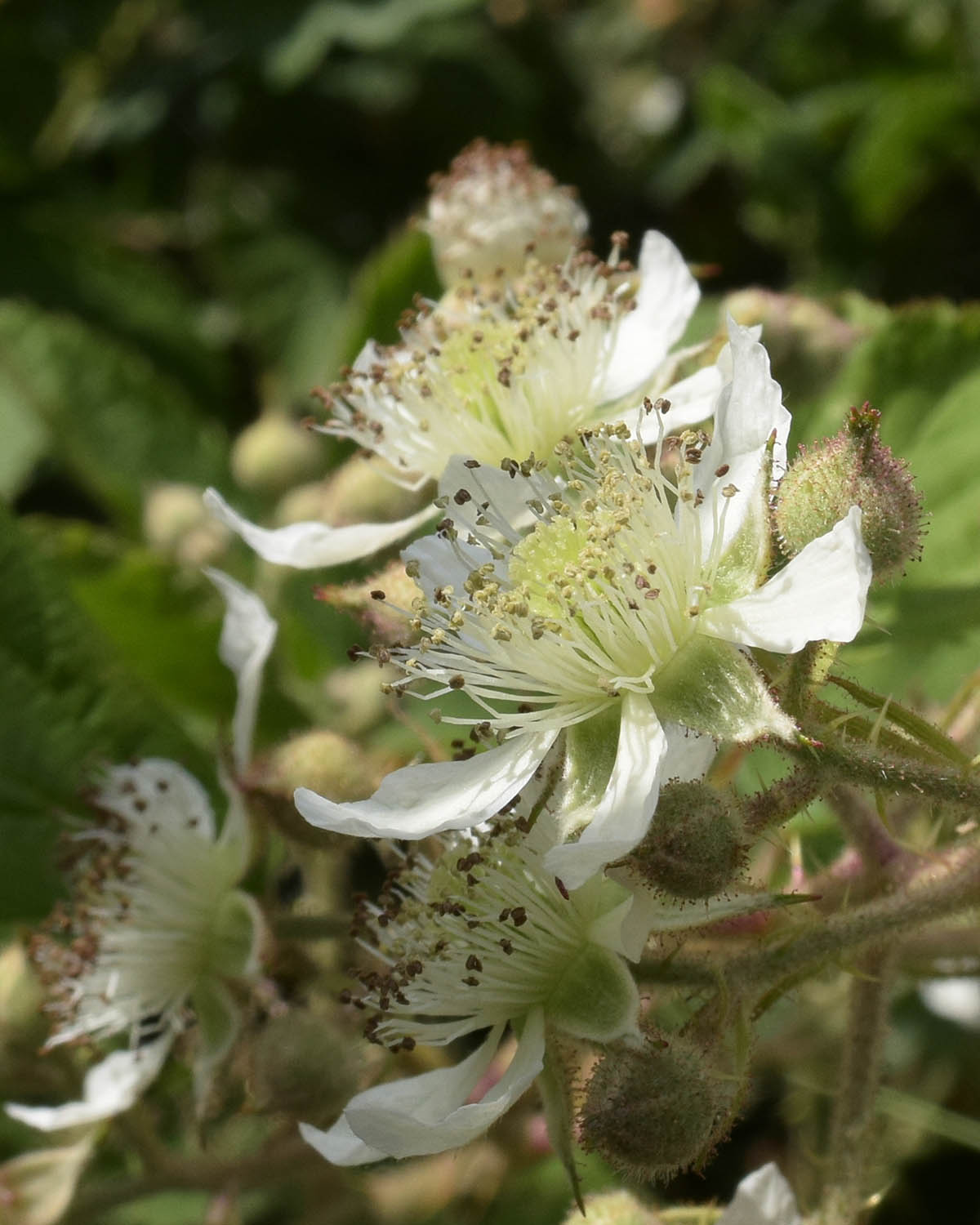
Rubus euryanthemus – Series Radulae
back to Alphabetical index · Taxonomic index
A glandular, hairy bramble with small white flowers, widely distributed over the southern half of Britain and north-west Europe; but often only locally common and absent from many areas. It is mainly a species of acidic woodland and is usually low-growing.

The inflorescence is usually a short, broad and fairly compact head of flowers with relatively short branches, which are sometimes interlaced. The rachis is straight or only slightly flexuose. This and the floral branches are hairy and strongly glandular with slender patent or slightly declining straight or curved prickles.

Flowers are fairly small, about 2-2.5 cm across. Petals are white with green veins near the base which can be a distinctive feature. They are narrow, obovate to elliptical, c.12 x 5mm. Styles are pale greenish-yellow; the carpels and receptacle are glabrous. Stamens are level with or slightly longer than the styles (best viewed from the side in older flowers).
Sepals are downy with thin white margins and have numerous short-stalked glands and a few acicles. They are long-pointed and patent at flowering.



Leaves have 3-5 leaflets which are not contiguous and usually a yellow-green colour, becoming glabrous above. The terminal leaflet is about 9 x 6cm, usually obovate, sometimes with straight convergent sides below the widest part, with a long acuminate tip and shallowly cordate base. The margin is sharply toothed to deeply incised (especially above) and undulate in open-grown specimens.



Leaflets are green and thinly pubescent below, but may become glabrous below when older.

Stems are bluntly angled with flat or furrowed sides; green in colour or becoming partly rufescent when exposed to the sun. They are strongly hairy and have abundant short glands not exceeding the length of the hairs, so somewhat hidden amongst them. Prickles are numerous, mainly confined to the angles but with smaller ones on the faces; they are yellow (or turning partly reddish), slender, patent or slightly declining.

